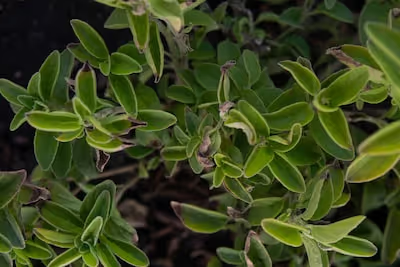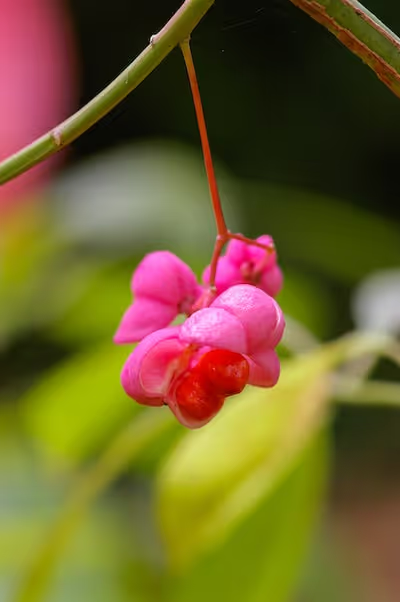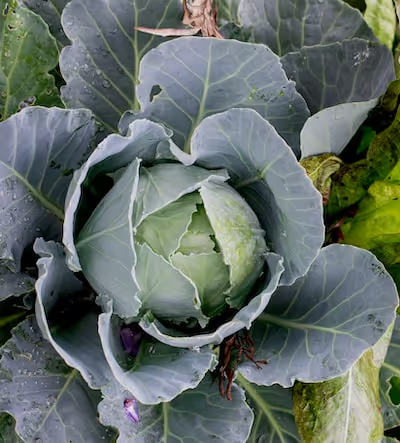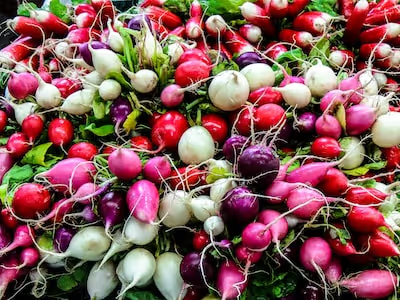Growing Okra Successfully in Your Home Garden
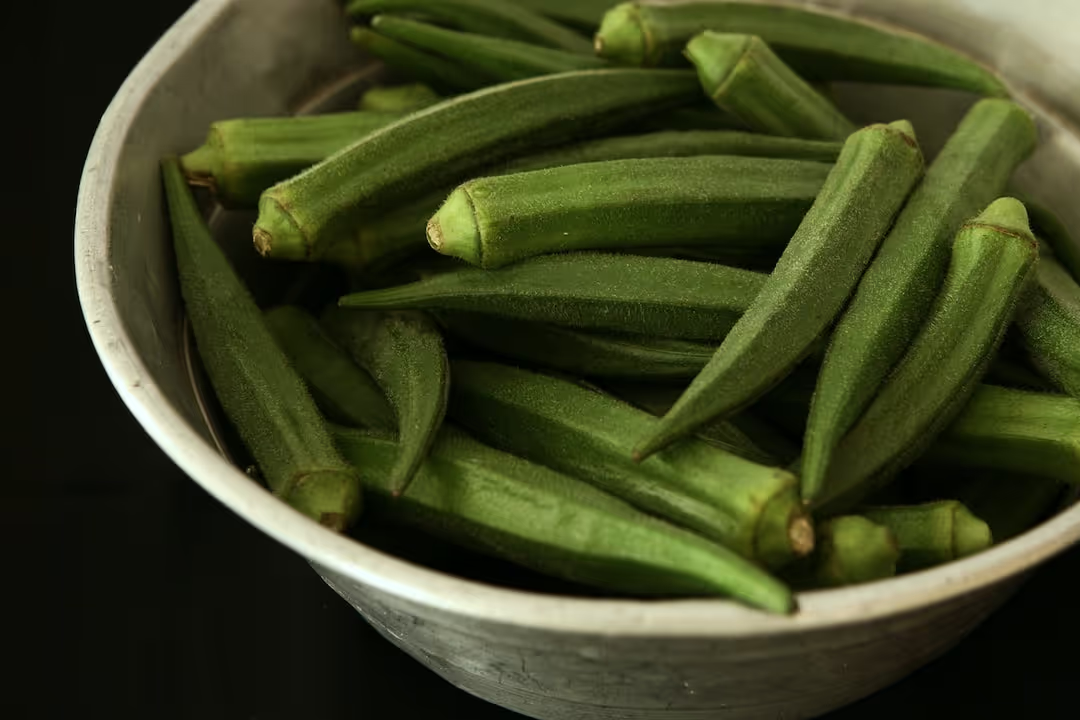
Growing Okra
Growing okra rewards gardeners with striking blooms, rapid growth, and abundant pods ideal for flavorful cooking. Start by sowing seeds directly into warm, nutrient-rich soil and give them full sun and regular watering for sturdy plants. With minimal fuss, growing okra delivers generous harvests and culinary satisfaction—keep reading for simple tips to ensure your okra thrives.
Cheatsheet: Home Okra Success
🌱 Varieties to Favor
- Clemson Spineless (compact, high yield)
- Burgundy (colorful, tender)
- Jambalaya (fast, heavy producer)
🌡️ Start: Soil & Temp
- Full sun, 6–8 hours daily
- Soil temp: 70–95°F (21–35°C)
- pH: 6.0–7.5
- Loamy, well-draining, rich in compost
⏳ Sowing & Spacing
- Soak seeds overnight for faster sprouting
- Direct sow 1/2 in (1.25 cm) deep after last frost
- Space 12–18 in (30–45 cm) apart in rows 3 ft (90 cm) apart
💦 Water & Feeding
- Water 1 in (2.5 cm) weekly; avoid wet leaves
- Mulch to conserve moisture
- Side-dress with compost midseason
⚡ Growth & Care
- Thin to strongest seedlings after sprouting
- Stake if plants top 4 ft (1.2 m)
- Watch for aphids, flea beetles, stinkbugs
- Rotate yearly to prevent nematodes
✂️ Harvest Tips
- Pick pods 2–4 in (5–10 cm) long, daily
- Wear gloves for spiny types
- Harvest boosts yield
- Overripe pods = woody & tough
🍽️ Nutrition & Uses
Loaded with fiber, vitamin C, folate. Adds texture to gumbo, fries, stews. Heirloom varieties double as edible landscaping.
🛠️ Tools and Products You'll Need
- Okra seeds
- Compost
- Mulch (straw or wood chips)
- Gloves (for spiny pods)
- Pruners or sharp scissors
- Hand trowel
- Watering can or hose
- Garden stake (if needed)
-
Growing Okra: heat, timing, and rhythm
I plant okra only after the soil bakes to 70 F 21 C and the forecast shows warm nights. Heat sets the tempo, and okra dances when days sit near 90 F 32 C with relentless sun.
Climate, timing, and soil
Direct sow 2 to 3 weeks after your last frost once the top 4 inches 10 cm of soil hold 70 F 21 C by late morning. In short seasons, I start transplants 3 to 4 weeks before the last frost in biodegradable pots to avoid root shock.
- USDA Zones 7 to 11 feel natural for okra, but raised beds and black mulch stretch it into Zone 5 to 6.
- Target soil pH 6.0 to 6.8, rich in organic matter, loose, and well drained.
Soil prep that pays
I work in 2 to 3 inches 5 to 7.5 cm of compost plus a light pre-plant dose of a balanced fertilizer like 5-10-10 at 0.5 pound per 100 square feet 225 g per 9.3 m². Side-dress with a little nitrogen once pods begin if leaves pale, then mulch 2 inches 5 cm to lock moisture.
Seeds and starts
Okra seed coats are tough, so I nick the edge with a nail clipper and soak 12 hours; this speeds germination. Sow 1 inch 2.5 cm deep, 3 seeds per spot, thin to the strongest at 12 to 18 inches 30 to 45 cm, with rows 3 feet 90 cm apart.
Transplant only into warm soil, rootball intact, and water in with a kelp-compost tea if you like gentle starts. Cold soil stunts plants for weeks.
Okra thrives in sustained heat and performs best when planted after soils warm to at least 70 F 21 C. Source: Texas A&M AgriLife Extension
Sun, spacing, and water
Give full sun for 8 to 10 hours and room for airflow to dry leaves after summer storms. I run drip lines at the base to keep foliage dry and soil evenly moist.
Plan for about 1 inch 25 mm of water per week, more in heatwaves on sand. Consistency prevents tough pods and keeps plants pumping flowers.
Feeding and growth management
Overdo nitrogen and you get a jungle of leaves with shy pods. I rely on compost, then spoon-feed during peak set with a light side-dress, and I foliar feed only if tissue tests flag a deficiency.
I top plants around 4 feet 1.2 m to encourage branching and easier picking. That single cut can double reachable pods in small gardens.
Varieties I rate highly for Growing Okra
- Clemson Spineless 80: dependable, straight pods, minimal spines on pods, 55 to 60 days.
- Jambalaya F1: compact, early, heavy set in containers and raised beds.
- Burgundy: red pods that turn green when cooked, eye candy in the bed.
- Cajun Delight: early yields in cooler summers, tender at 3 to 4 inches 7.5 to 10 cm.
- Star of David: chunky, ridged, great for grilling, pick smaller.
- Jing Orange: productive, striking color, thrives in heat.
For seed, I’ve had consistent stock from regional suppliers and national houses like Johnny’s, Baker Creek, and Southern Exposure Seed Exchange. Choose early types in cool zones and tall, late workhorses in long, hot summers.
Containers
One plant per 7 to 10 gallon 26 to 38 L pot, 12 inches 30 cm deep, with stakes ready. I topdress with compost midseason and water daily in July.
Dwarf picks: Jambalaya F1, Baby Bubba, and Cajun Jewel. Keep pots off hot concrete to avoid root stress.
Pollination, flowers, and seed saving
Bees mob okra blossoms on still mornings, and that traffic boosts set. Flowers are edible, mild, and pretty in salads.
For seed, let a few pods brown and rattle on the plant, then dry fully indoors. Okra self-pollinates but bees can cross varieties, so isolate 500 feet 150 m for truer seed.
Harvest rhythm
Start picking 50 to 65 days from sowing and check daily in heat. I harvest pods at 2 to 4 inches 5 to 10 cm for classic types, using pruning shears and a glove if plants carry spines.
Cut just above the cap, leaving a nub to protect stems. Miss a day and pods can go woody by afternoon in August.
“Harvest okra pods when young and tender, usually 2 to 4 inches long, to avoid toughness.” Source: University of Georgia Extension
How much to plant
In my beds, a single healthy plant yields about 1 to 2 pounds 0.45 to 0.9 kg per season with steady picking. Five to eight plants feed a family that loves gumbo and grilled okra.
Pests and diseases I actually see
- Aphids: blast with water, release lady beetles, or use insecticidal soap in the evening.
- Stink bugs and leaf-footed bugs: handpick early, use trap crops like sunflowers, and net rows at flowering if pressure spikes.
- Flea beetles: floating row cover until plants reach knee-high, then remove to allow pollinators.
- Caterpillars corn earworm: Bacillus thuringiensis Bt works on small larvae.
- Powdery mildew: improve airflow, water at soil level, and remove shaded lower leaves.
- Southern blight and Fusarium wilt: rotate 3 to 4 years, avoid planting after cotton, tomatoes, or peppers, and keep mulch off the stem.
- Root-knot nematodes: solarize beds or plant marigolds in off-season, and add organic matter.
Heat, drought, and stress tells
Okra tolerates heat, but irregular watering triggers misshapen pods and flower drop. Leaves cupping upward signal thirst by midday.
If growth stalls in cool snaps, wait it out and avoid fertilizing into cold soil. Patience beats force.
Post-harvest handling
Refrigerate unwashed pods in a breathable bag for up to 3 days. For long storage, blanch 3 minutes, chill, pat dry, and freeze on trays.
For less mucilage in the pan, cook hot and fast, slice after searing, or add acid like tomato or lemon. Younger pods always behave better.
Companions and rotation
I interplant basil, zinnias, and dill to pull pollinators and predatory wasps. Skip shading crops like corn nearby, and rotate okra out of mallow relatives and solanaceous beds for several years.
Buying checklist for Growing Okra
- Heat-adapted seed suited to your frost dates and day length.
- Drip kit, 0.5 gph emitters, and a simple timer for steady moisture.
- Biodegradable pots for early starts, sharp bypass pruners, and a breathable glove.
- Row cover for flea beetles and black mulch for soil warmth in cool zones.
- Soil test and amendments for pH 6.0 to 6.8 with calcium and boron adequate.
Data points and sources I trust
Extension guides set the guardrails I test in my beds. The University of Georgia, Texas A&M AgriLife, Clemson Cooperative Extension, and UF IFAS have clear, field-proven guidance on temperatures, spacing, and harvest timing.
Keep soil moisture near 1 inch 25 mm per week for steady production, and pick frequently to maintain yield. Sources: Clemson Cooperative Extension and UF IFAS
Quick answers
- Partial shade: yields drop, but afternoon shade can help during 100 F 38 C heat spikes.
- Top height: many varieties hit 6 to 8 feet 1.8 to 2.4 m; top at 4 feet 1.2 m for branching.
- Red vs green: flavor matches, color fades when cooked, harvest at the same length.
- Perennial: tender perennial in frost-free zones, grown as an annual where frost returns.
- Salty soils: okra tolerates mild salinity better than most vegetables, but yields dip if EC climbs too high.
My best seasons came from heat-hardened transplants, ruthless daily picking, and mulch laid early. Keep the water steady, keep the sun fierce, and Growing Okra turns into a summer ritual worth repeating.
Frequently Asked Questions About Cultivating Okra
Which soil conditions benefit okra?
Okra plants prefer soil that drains water efficiently, rich with organic matter, and with a neutral to slightly acidic pH between 6.0 and 6.8. Add compost or aged manure before planting to improve soil structure and nutrient content.
How much sunlight does okra require?
For vigorous growth and abundant yields, okra thrives in full sun. Select a planting area that provides at least 6 to 8 hours of direct sunlight daily.
When should okra seeds be planted outdoors?
Plant okra seeds outdoors when soil temperatures consistently reach at least 65°F (18°C). Cooler soils may inhibit seed germination or slow growth. Typically, this occurs in late spring or early summer, after nearby nighttime temperatures remain steadily above 55°F (13°C).
How far apart should okra seedlings be spaced?
Okra seedlings grow best when spaced approximately 12 to 18 inches (30 to 45 cm) apart within rows, with rows positioned about 3 feet (90 cm) apart. This spacing promotes healthy airflow, reduces disease risks, and gives plants ample room to mature.
What watering schedule suits okra plants?
Water okra plants regularly, providing about 1 inch (2.5 cm) of water per week. Water deeply and consistently, especially during flowering and pod development. Overly dry soil can negatively affect pod production, while overly wet conditions may encourage root rot.
Which companion plants enhance okra growth?
Plant basil, peppers, eggplant, and lettuce near okra, as these companions benefit mutual growth and pest management. Marigolds also help repel harmful nematodes and insects, protecting your okra crop naturally.
When and how is okra harvested?
Harvest okra pods when they're young, tender, and approximately 2 to 4 inches (5 to 10 cm) long—typically after 50 to 60 days of planting. Using garden shears or a sharp knife, cut the pods cleanly from the stem. Frequent harvesting encourages continuous pod production.
What pests typically affect okra plants?
Aphids, stink bugs, and cabbage worms commonly target okra. Inspect plants regularly, removing pests by hand or employing natural solutions such as neem oil or insecticidal soap to control infestations effectively.
Growing okra rewards patience and attention. Start with warm soil, keep your plants well-watered, and harvest pods young for the best flavor. Okra asks for sun, space, and a watchful eye for pests, but gives back with crisp, versatile pods all summer long. If you’ve enjoyed adding new flavors to your backyard, you might also try growing green beans or cucumbers alongside your okra. In the end, growing okra isn’t complicated—just plant, tend, and let the garden surprise you. The best meals start with what you pull from your own soil.
The Prepper's Guide to Okra: Essential Tips for Reliable Harvests
Choosing Reliable Varieties for Survival Gardens
- Clemson Spineless: Tender pods within 56 days; resists drought effectively.
- Burgundy Okra: Yields nutrient-rich pods quickly; thrives under high heat.
- Emerald Okra: Produces heavy harvests consistently; disease resistance high.
Storage Strategies for Sustainability
- Dehydrate for longevity: Slice thinly; dry at 130°F (54°C) until crisp; stores up to 12 months.
- Can to preserve nutrition: Pressure-can sliced pods at 11 psi (75 kPa) for 25 minutes.
- Freeze abundant harvests: Blanch 3 minutes, cool rapidly, drain, freeze efficiently up to 9 months.
Seed Saving for Self-Reliance
- Harvest mature pods: Allow pods to dry on plants until brittle, seeds rattle within.
- Extract and clean: Remove seeds, air-dry thoroughly indoors, eliminate debris.
- Store correctly: Label, seal airtight, maintain cool/dry, viable for 4+ years.
Nutritional and Medical Benefits
High fiber: Supports digestive health, stabilizes blood sugar naturally.
Rich in vitamins A, C, K: Strengthens immunity, promotes bone density.
Mucilage content: Soothes digestive tract irritation, historically used medicinally.
Okra as a Companion Plant
- Beans and peas: Nitrogen-fixing legumes enhance pod yields significantly.
- Peppers: Similar growth requirements; mutual pest deterrence.
- Radishes: Deterring aphids naturally; improves root aeration.
Find out which plants will thrive in your garden!
Answer a few fun questions and get custom plant recommendations perfect for your space. Let’s grow something amazing together!

start your season
